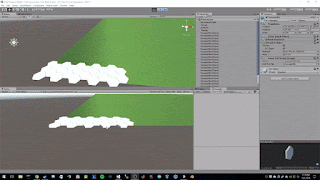Ionic 2
In order to install Ionic, we need to install node.js. One thing to note here, we normally always install the latest version of software and it normally works but sometimes node can be fickle and be really buggy in latest versions. I suggest picking a version that is a few versions behind the latest to ensure the major bugs are worked out and patched; at the time of writing this blog, I am using v6.1.0.
There are two Command Line Interface (CLI) commands that I find very useful when developing with Ionic; they are "--dev" and "--save". --dev is currently deprecated in v6.1.0 and is replaced with "--only=dev" but the functionality remains the same. This command recursively fetches node packages which means it pulls all dependencies along with the parent package. This is incredibly useful for new developers who need to set up a new environment and might not have the granular package detail as existing environments. An example of this, on Windows, is as follows: "npm update --dev" or "npm update --only=dev".
The second command is "--save". This command pulls the plugin AND adds a reference to the plugin in your config.xml file which contains all plugins your project is using. Many times while developing we might want to test some plugin but not actually save it so we can omit the "--save" and ensure it is not coupled with the project. An example of this, on Windows, is as follows: "cordova plugin add cordova-plugin-facebook4 --save".
The second command is "--save". This command pulls the plugin AND adds a reference to the plugin in your config.xml file which contains all plugins your project is using. Many times while developing we might want to test some plugin but not actually save it so we can omit the "--save" and ensure it is not coupled with the project. An example of this, on Windows, is as follows: "cordova plugin add cordova-plugin-facebook4 --save".
Command Prompt
When I first started developing in Ionic I used a non administrator command prompt which eventually led to much frustration because it would serve me errors that had little support on the internet. It took me a little time to discover that these errors were not caused by any code or setup problems but rather the fact that I installed/ran Ionic2 with this non administrator command prompt. Make sure when starting up a command prompt, that you open it with administrator privileges otherwise you will encounter errors and become frustrated with it not working.
Conclusion
I learned a ton about the beginning stages of building a hybrid app over this week and I hope to continue this learning by extending it to native plugin integration such as Facebook / Google+ / Twitter authentication and database integration. One theme that continues to pop up while working with all these technologies is the difficulty in learning new software. Every time there is something new, it is inevitable that we will encounter hardships that feel impossible, but if we can break the problem down and understand its parts, we will eventually solve the problem and grow our knowledge continually.
As always, feel free to leave a comment or question. Happy programming!








